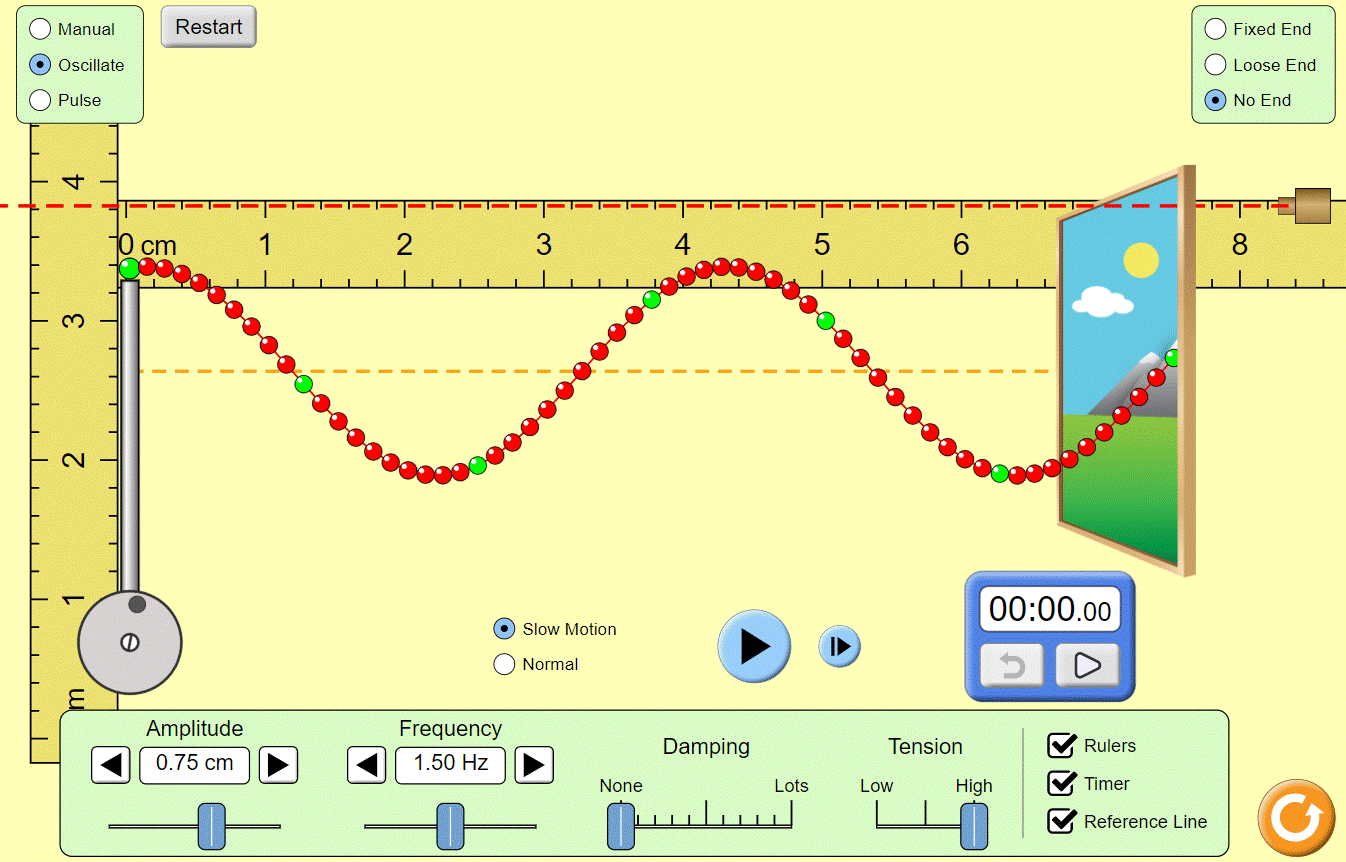In this activity, you will use a PhET simulation to observe wave interactions and develop the wave speed equation. You can use the simulation below, or if that doesn’t work well, you can find it directly here.
1/23-24 AP Phys: Energy practice problems in your textbook
Homework/classwork
Thursday
Page 152, Problems 21-24
Friday

Page 153, Problems 33, 35 (both spring energy), 47 (a red, make sure to do drawings before you start!), 29, 30, 32, 34, 43
Jackson suggests you do Problems 73 and 75; I guess I’ll have to try these this weekend 🙂
Questions? Post them below. Don’t forget, you can log in with just about any social network and receive email updates when your question is answered.
1/23 AP Phys: Quantifying spring energy
Write the slope of your F/x calculations for each spring under the matching color on the whiteboard on the right.
Spring constants
As we saw yesterday, the relationship between the force applied to a spring and the stretch of the spring is linear. The slope of the F/ Δ x plot is
F = k* Δ x
which can be rearranged for the spring constant:
k=F/ Δ x
and the units of the spring constant must be N/m.
Review: Video showing the calculation of a spring constant
Similar to the lab we did in class, only this one uses the force of gravity between the earth and a hanging mass.
Calculating the energy in a spring
We demonstrated this both with algebra/geometry and with integrals in calculus. Vide of this will appear below soon.
Calculation video will appear here soon.
Flipping physics video.
Class/homework
In your textbook, Page 152, Problems 21-25. Complete tonight so we can whiteboard them tomorrow.
Problem 22: Here is a video of helper springs at work: https://youtu.be/GQs79EIw81M (this video is set to not allow embedding in other web sites. Below is another video that did allow embedding.
1/22 AP Phys: Energy in springs: Hooke’s Law and Spring constants
Goals
- Analyze the relationship between how far a spring is stretched (Δx) and the force required to hold it at that distance.
- Develop a model for energy in a spring based on (ΣE) + W = (ΣE)
- If the spring has no initial energy, then the work done on the spring equals the final elastic/spring energy.
Procedures, general outline
You will need to think about how you are making the following measurements, and record the details of your procedures in your lab book.

- Before you start, read the procedures and create a data table with all the necessary columns and rows.
- Chose a tubular spring scale from the bin, and records its color.
- Pull a spring scale out and hold it at any distance.
- Record the stretch (Δx) of the spring.
- Record the force measurement of the scale.
- Repeat at several different lengths, until you are comfortable that you can plot the data and be confident that your choice of linear or exponential fit is an accurate model.
- Repeat steps 2-6 for a total of three different colored spring scales.
Analysis
- Analyze your data using a scatter plot, and develop an equation for each spring.
- Plot stretch as the independent variable.
Conclusion development
- Develop conclusions with your group about the relationship.
- Prepare to present a whiteboard tomorrow: You should have a small box in your lab book showing what you will write on your whiteboard tomorrow.


